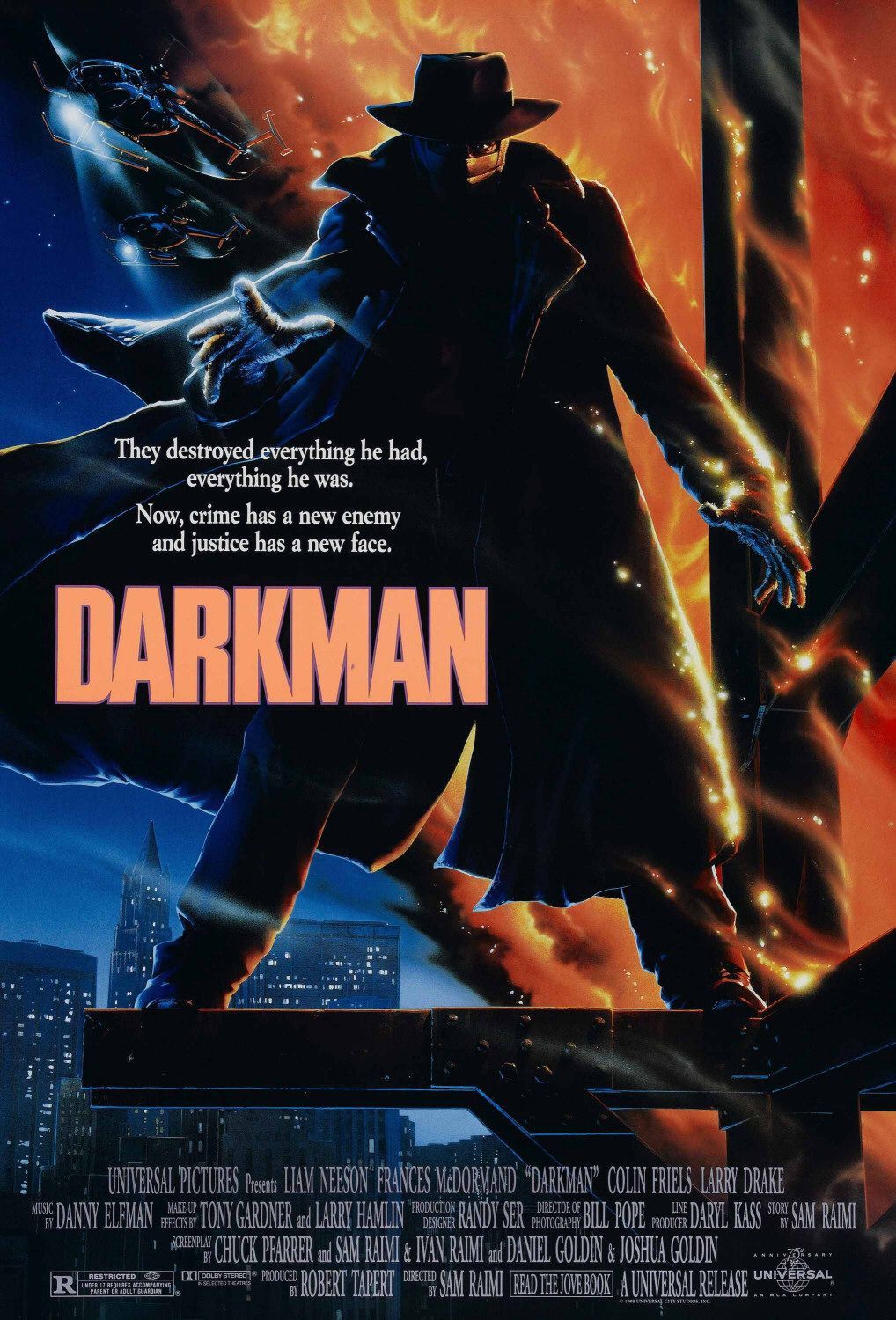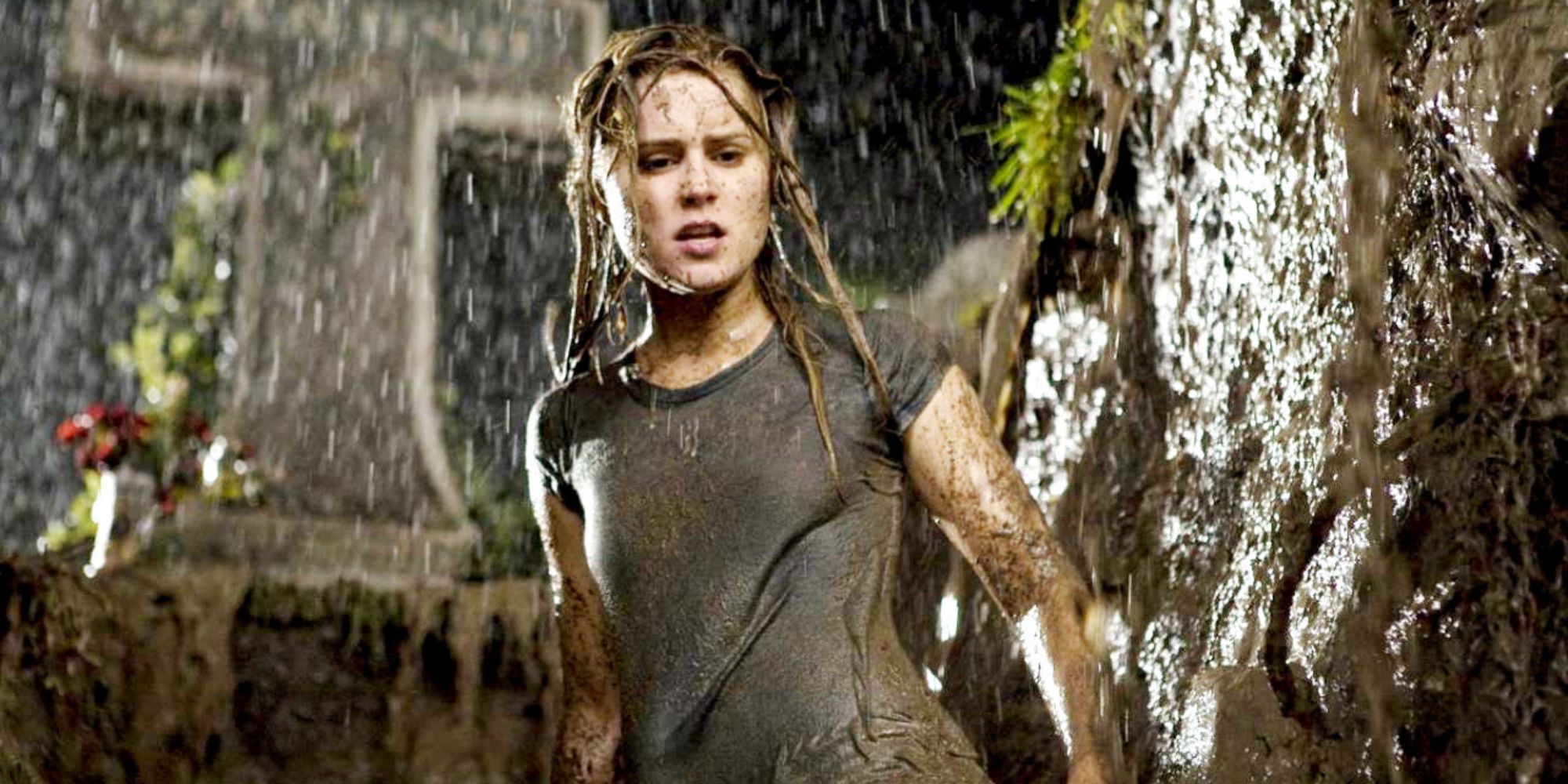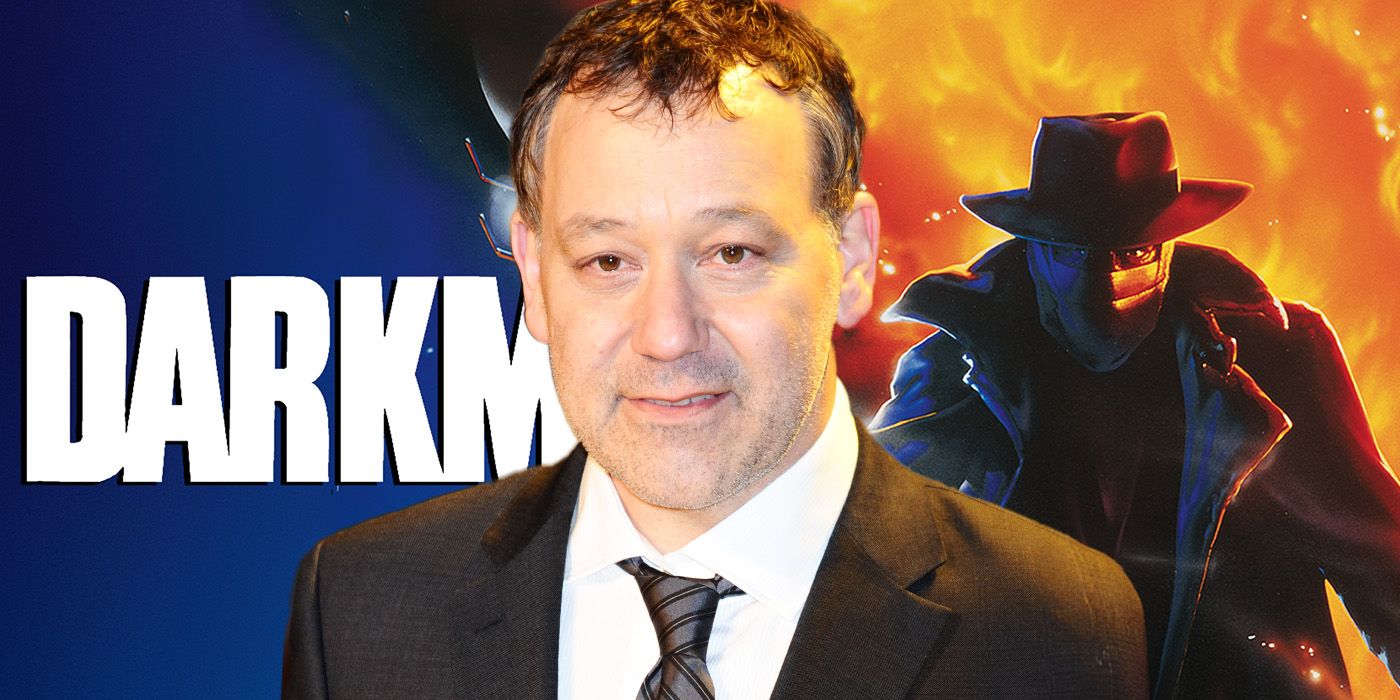The Big Picture
- Darkman combines superhero and Universal Monster influences in a tragic revenge tale.
- Universal Studios took a chance on Sam Raimi's unique vision and it paid off.
- Darkman's somber qualities make it a modern Universal Monster film filled with heart.
Sam Raimi's lasting legacy as a filmmaker is torn between his gonzo-horror sensibilities with the Evil Dead franchise and the superhero sensation, Spider-Man, which remains perhaps the greatest comic-book filmmaking endeavor in history. But in 1990, his first film with a major studio combined both of those worlds into one grimy, thrilling revenge tale about a tragic anti-hero played by Liam Neeson.
Darkman follows Neeson as Dr. Peyton Westlake, a scientist whose experiments with synthetic skin go awry when an organized criminal destroys his lab and brutally attacks him, leaving him disfigured and mentally unstable, desperate for revenge, and longing to rebuild his relationship with his girlfriend, an attorney named Julie (Frances McDormand) who is working to take the crime ring down. The movie is a wild blend of influences, from comic books and noir fiction to classic horror. Raimi uses all his expected tricks: stylish camerawork, macabre practical effects, and a goofy sincerity to make Darkman one of the most original and interesting movies in his filmography.

Darkman
- Release Date
- August 24, 1990
- Director
- Sam Raimi
- Cast
- Liam Neeson , Frances McDormand , Colin Friels , Larry Drake , Nelson Mashita , Jessie Lawrence Ferguson
- Runtime
- 96
- Main Genre
- Action
- Writers
- Sam Raimi , Chuck Pfarrer , Ivan Raimi , Daniel Goldin , Joshua Goldin
- Tagline
- They destroyed eveything he had, everything he was. Now, crime has a new enemy and justice has a new face.
Sam Raimi's Most Important Influence for 'Darkman' Is the Universal Monster Canon
While Darkman pulls from Raimi's love of noir stories and superhero fiction (especially Batman), the most important ingredient of the film is Raimi's love of the Universal Classic Monsters. The classic characters from the 1930s include Dracula, Frankenstein's Monster, the Creature From the Black Lagoon, and tons more. Raimi pulled on many narrative and thematic threads from these films in the creation of Darkman.
For starters, one of the classic motifs of the Universal Monster canon is a science experiment gone wrong. Dr. Westlake is turned into Darkman after his laboratory is destroyed, and he's dunked into a vat of his own chemicals; the science lab aspects of the character evoke both Frankenstein and The Invisible Man. Darkman's transformation—including the noir-inspired outfit that he wears—also feels like an homage to the Invisible Man, as both don bandages to cover up their unique physical conditions. Like the Invisible Man, Darkman's condition also drives him mad and causes him to behave erratically, compared to how he was in his former life.
After his transformation, Darkman constructs a synthetic mask of himself to reflect his original appearance. He is able to reunite with his wife while in this disguise, but the effect wears off after a certain amount of time. This has a similar function to the condition of the werewolf in The Wolf Man, who has to retreat away from his loved ones before his monstrous side is unleashed by a full moon. Darkman is forced to live in the shadows and remove himself from his family life, an undeserved fate for a person whose entire life was flipped upside down by circumstances beyond his control. This tragic condition relates Raimi's film closely to the Universal Monsters, who are similarly often victims of circumstance more than they are outright villains.
Universal Took a Chance on 'Darkman,' and After a Difficult Post-Production, Sam Raimi's Vision Was Fulfilled
It's difficult to imagine any young filmmaker receiving a check to invent their own original IP in this day and age. Universal saw the work that Raimi put into his independent films and took a flier on this guy having something worth investing in. The best part is that it turned out to be correct, as Raimi's career would blow up massively in the following decade, as Darkman did grow into a franchise including direct-to-video sequels, action figures, and comic books.
Raimi was able to pull from influences that dictated his own interests as a storyteller to create a movie that is incredibly evocative of those past works while also being distinctly Raimi in all the best ways. But it wasn't all roses working with a larger studio, as Darkman was plagued by a botched studio edit that resulted in disastrous test screenings. Desperate to recut the film into something salvageable, Universal tried to lock Raimi out of the process entirely. But Raimi's longtime collaborator, producer Robert Tapert and editor Bob Murawski, came together to pull off something of a movie-heist behind the scenes. Per the 30th anniversary oral history published by The Hollywood Reporter, Tapert and Murawski recut the film, had the negatives sent out, and critic screenings were scheduled within two days. There was no going back. Universal was furious with this, but it clearly worked out for the better, as Darkman ended up tripling its budget and garnering positive reviews.
The success of the film proves why the risk of letting a talented filmmaker do their own thing is worthwhile. You get something artistically motivated and unique in vision, instead of a soulless work meant only to generate ticket sales, and the effort leads to good results. Darkman worked because the studio gave Raimi a chance, and then because Tapert and Murawski were brave enough to work in spite of Universal's later reservations.

Sam Raimi Proved That PG-13 Horror Can Still Terrify With This 2009 Movie
No, it's not an Evil Dead movie!'Darkman's Haunting, Somber Qualities Make Sam Raimi's Film A Great Modern Universal Monster Story
Darkman is packed with cartoonish violence, eye-popping special effects, and wild camerawork that Raimi is renowned for; a singular vision that truly could have come from no one else. It feels like the perfect meeting point between the Spider-Man side of Raimi and the Evil Dead side. But the piece of the puzzle that makes Darkman so special is not even the wacky style or the special effects: it's the genuine heart that Darkman wears on its sleeve.
Like Frankenstein's Monster, Darkman is a figure who toes the line between the grotesque and the tragic. You want to be afraid of him, but you are drawn to something heartfelt that lurks underneath the veneer of monstrosity. The difference between a hero and a monster really comes down to their origin. Heroes present as strong, confident, and beautiful, while monsters are transformed into something society is averse to. The hero is emboldened and celebrated for their unique abilities, while the monster is abused and hated for theirs.
Raimi is one of the most endearingly sincere filmmakers there is; you would never see him holding back on something over the fear of being perceived as corny. He allows Darkman to be unapologetically bathed in the tragic romance at the center of the story, and that is key to the film fitting in with the iconic legacy of the Universal Monsters. Darkman certainly lines Raimi up to take on the superhero genre fully a few years down the line, but its DNA is rooted in Universal Monster history. Darkman belongs to the monsters, and Raimi will always have a home with them.
Darkman is available to watch on Amazon Prime in the U.S.

